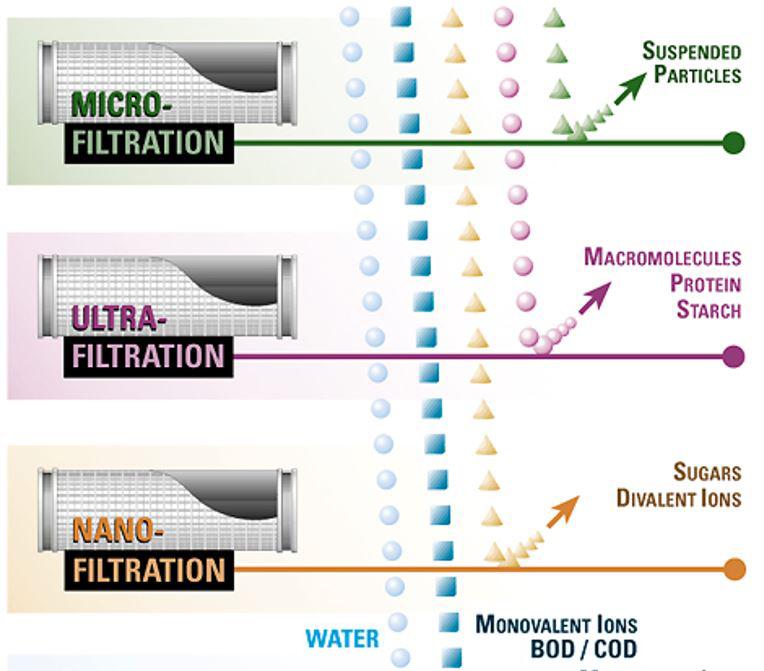Membrane Filtration Systems
Membrane Filtration
Membrane filtration is a type of water filtration that utilizes a semi-permeable membrane in order to separate unwanted materials from water to achieve a more desirable process water. There are different types of membranes with different pore sizes that allow for more or less contaminants to pass through, and that each come with their own benefits and drawbacks. Depending on the goal, membrane filtration can be done alone or in tandem with other forms of water treatment or filtration, for example, with reverse osmosis.
Micro-Filtration
Microfiltration (MF) membranes usually have some of the largest pores of the commonly used filtration membranes that we will discuss in this blog series. They are often used as a pre-treatment step to remove larger contaminants from the water before sending it through a finer filter, depending on the desired level of separation. They can usually remove such materials as sediment and suspended solids, and larger biological growth like algae and some bacteria. They cannot, however, remove smaller or microscopic materials like viruses or multivalent or monovalent ions.
Ultra-Filtration
Ultrafiltration is somewhat similar to microfiltration in terms of what it can do. The main difference between the two membranes is that ultrafiltration has a smaller pore size and can therefore separate more from the water than a microfiltration filter can. While microfiltration filters can remove suspended solids and most bacteria, ultrafiltration can remove all of the above as well as most viruses, making it a more effective, consistent alternative, depending on the desired product. Like microfiltration, ultrafiltration is also often used as a pre-treatment step before sending water on to finer filtration methods.
Nano-Filtration
Nanofiltration is one of the lesser-used types of specialized filtration methods. It falls into a fairly niche area in terms of what it can achieve. Its small pore size allows nanofiltration membranes to remove bacteria, most viruses, and divalent ions, but is unable to remove monovalent ions. And while nanofiltration has its uses, Reverse osmosis may be preferable for a more thorough filtration while ultrafiltration can achieve similar results to nanofiltration and is more widely used. One benefit of nanofiltration however is that it can remove divalent ions from water which can lead to scale, essentially softening water through filtration.
Reverse Osmosis
Reverse Osmosis Water Treatment is a form of water purification which produces high-purity water for use in a variety of applications across different markets. Reverse Osmosis, or RO for short, is one of the best way to remove unwanted minerals from water to meet your water-purity requirements. RO water has a wide range of uses, and can increase efficiency and save money in the long run reducing overall water usage and helping save on energy and other water-related expenses.

